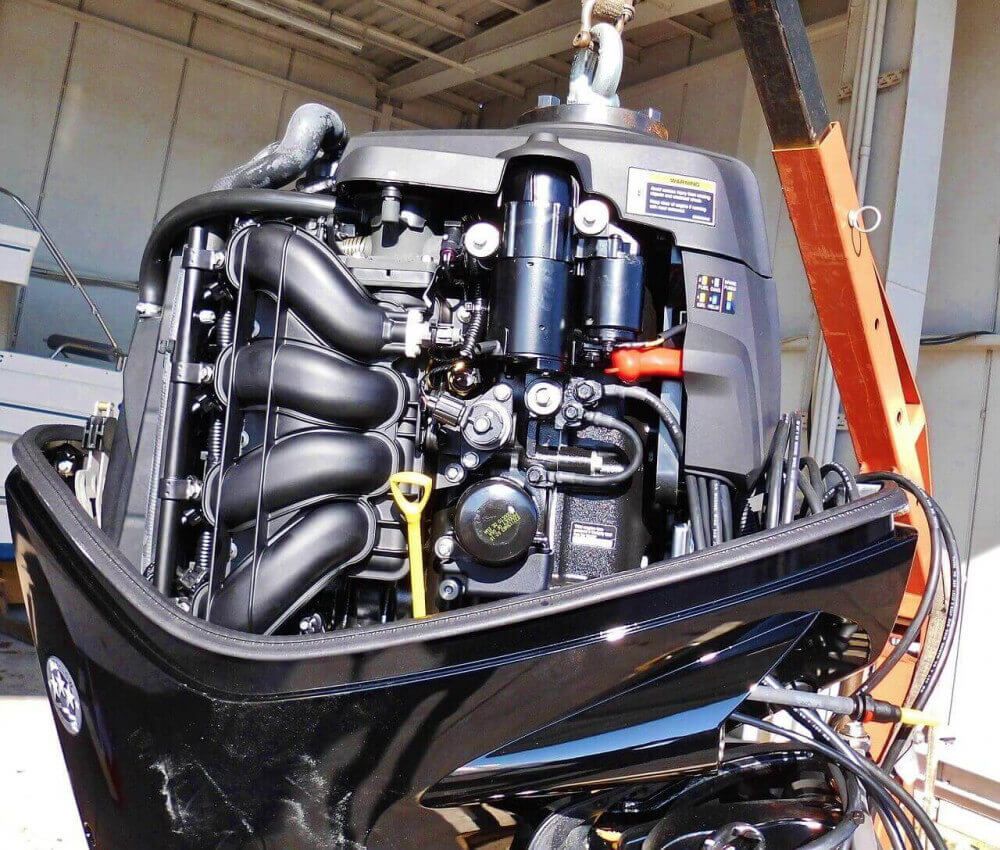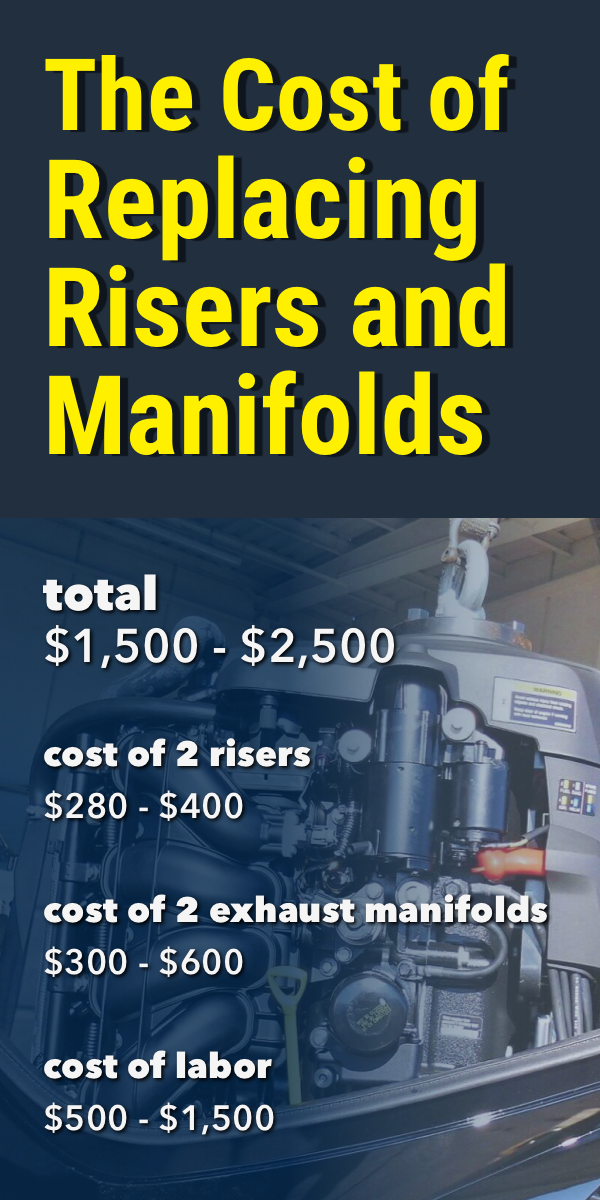The Average Cost of Replacing Risers and Manifolds
It is very important to ensure that you take care of your ship or boat properly. Being able to keep things in the best possible condition will ensure that you have a good experience while out on the water. Over time, various parts such as your risers and manifolds will need to be replaced.
How much does it cost to replace risers and manifolds? On average, replacing risers and manifolds will cost about $1,500 - $2,500. The price of parts ranges from $500 - $1,000. Additional labor costs range from $500 - $1,500. The price depends on the system you have and the quality of parts and labor.
Read on below as I go over the different factors that can impact the cost of replacing them. Knowing more about the process will give you a better understanding of how much you will need to save to replace the parts. I'll also discuss how to understand when it is time to replace these parts before they fail on you.

The Costs In More Detail
- cost of 1 riser : $140 - $200
- cost of 1 exhaust manifold: $150 - $300
- cost of labor: $500 - $1,500
Most people need 2 risers + 2 exhaust manifolds.
Parts total: $600 on average
That's just what it is. Where you can really save some money, is on the labor.
Labor total: $1,000 on average
It's about a days worth of work. A professional needs roughly 8 hours to get the job done.
The truth is that the price is going to differ depending on various factors. You may wind up spending over $2,000 on average to replace your risers and manifolds when hiring professionals. It's not a difficult job, but it takes some time and effort. I try to save on labor as often as I can (but I also enjoy maintenance).
There are so many differences between the parts needed for different boats that I can only give you ballpark prices.
You should know that these are expensive parts to replace that can cause you a bit of an inconvenience. But they do need replacing every once in a while. Luckily, if you make sure they are properly maintained, you can increase the life span up to 10 - 20 years.
On average, however, you'll have to replace them every 3 - 5 years.
Factors That Impact the Cost
It's important to know that there are various factors that can impact the cost of these parts.
Risers are a little easier to find at lower prices than exhaust manifolds but both of these will cost you a fair bit of money. The better-quality parts are going to be on the higher end of the spectrum.
If you want to get parts that are going to last a little longer, then you will want to spend more money. Getting parts that are made out of better materials may give you better overall results. Many of the exhaust manifolds on the market are made out of cast iron but stainless steel is generally a more desirable material. Personally, I prefer stainless steel over cast iron. I generally opt for something that will last me a bit longer.
The thing about exhaust manifolds is that they are going to rust. When you're running a wet manifold setup, the manifold is going to rust over time. This is why it's made out of a thick type of metal as it helps to mitigate the problems caused by the rusting, allowing the part to last for longer periods of time.
Other factors that impact the cost include the quality of the build and the use of the part. If you make sure to hire professionals to install these new parts for you, then that is going to cost money as well. Depending on the condition of your boat, you may have some other issues to deal with too. It is always good to be prepared to address any nagging issues that are present near the exhaust site.
But even parts made out of better materials will need to be replaced eventually.
When to Replace Risers and Manifolds (and How You Know)
Depending on the type of water that you are sailing in, your risers may only last you for two or three years. You will want to check on the condition of the parts to ensure that things are in good working order. Once you know that it has been two years since you have replaced the risers, you should begin inspecting things thoroughly.
Marine exhaust risers are going to be privy to the same problems as the manifolds for the most part. It is in your best interests to check on them ahead of time so that they don’t give out on you while you are out on the water. Thankfully, learning when to replace the risers and manifolds should not be overly difficult.
As a general rule, you should start inspecting your risers and manifolds thoroughly after having used them for two years. Many exhaust manifolds can last you between three and five years but factors such as the type of water you are sailing in will make a difference. It is best to start looking at the exhaust risers and manifolds once they are two years old.
Understand that your risers are likely going to fail before the manifolds do. These are a bit more fragile than the manifolds and have a slightly shorter lifespan. Check them after they have reached two years of age and then continue to check them annually.
There are many signs that you can look out for to determine if your risers and manifolds are going out or not. One common way to tell that a riser is going bad is to check to see if you notice rust stains coming from the riser-manifold joint. If you do see the rust stains, then this is a sign that the gasket is failing.
In order to inspect things better, you should drain the water from your risers and manifolds. This is going to allow you to get a better look and you can poke around to see what is going on. Go ahead and unclamp the exhaust hoses first and then remove the bolts that secure the risers so that you can peer inside. You need to be able to see what is going on in order to determine if you need to replace the units.
You should use a screwdriver or another flat tool to perform a quick physical inspection of the risers and manifolds too. If you notice that material comes off of the part when you rub the screwdriver against it, then that is a sign that it needs to be replaced. You will also want to look around for cracks to the best of your ability.
If you determine that the risers need to be replaced, then take them off and use this opportunity to more thoroughly inspect your manifolds. You should try to feel for hot spots inside of them. If there are any, then this is a sign of internal corrosion and it will mean that they need to be replaced as well. You can also use a special tool called an infrared pyrometer to help diagnose any issues with your manifolds if you are keen to spend the money.
Should You Hire Professionals to Help?
There are two ways that you can go when looking to replace your risers and manifolds. You can buy the parts and install everything yourself. Conversely, you could choose to hire professionals to put everything on for you.
Whatever method you choose should be fine but you will need to know what you are doing if you want to install things yourself. Make sure that you know how to put things on properly before proceeding. If you are lacking in confidence, then hiring professionals may be your best bet.
It is just important to make sure that your exhaust system works really well. This is not going to be overly difficult for anyone who is used to working on his or her boat. If you have the right tools, then replacing your own manifolds and risers will actually be smart. You can save a bit of money by going this route too.
When you hire professionals, this is when you can start to spend over $1000 on replacing things. You will not just be paying for the parts any longer. You will be paying for the labor of putting it on as well and this is going to increase the cost. If you wish to keep your costs as low as possible, then you will want to avoid hiring professionals.
Simply ask yourself which situation is going to make you feel more comfortable. If having skilled professionals service your boat gives you greater confidence, then it may be worth the investment. The important thing is to have a reliable boat at the end of the day. Just keep in mind that doing the work yourself can potentially save you money.
Conclusion
This is going to be a very crucial aspect of boat ownership that you will have to take seriously. The riser and manifolds are going to need to be replaced from time to time. There is no avoiding the fact that your parts are going to rust and that they will need to be swapped out. You can mitigate the costs a bit by looking for a good deal and trying to replace the parts by yourself.
If you have the ability to do the work, then it will save you money. Determining the exact cost of replacing risers or manifolds is somewhat difficult. Parts can vary in price depending on the materials used to make the part and the overall quality of the part. Even so, you should always set aside a bit of money so that you can replace these parts when need be.
If you have to replace everything at once, then you may wind up spending over $1000 easily. Try not to fret when this happens as it is just a regular part of boat maintenance that is keeping you safe. If you are vigilant about checking your boating exhaust system, then you will be able to replace parts before they get too bad and wind up failing on you.
Related Questions
How long do manifolds and risers last? Good-quality risers last on average 4 - 5 years in saltwater, and 6 - 8 years in freshwater. Exhaust manifolds will last on average 6 - 8 years. Saltwater use may reduce the life span to 3 years. Light use in fresh water may increase the life span to up to 20 years.
Did you find the answer to your specific question?
👍 13 👎 0

Comments
Pim
Good site.
Sailing around the atlantic for three years in an home made cat, no engine, no interesting elektronics. The ocean is not boring, it is interesting, beautiful and fulfillung to sail.
Just go for it!
Shawn Buckles
Hi Pim, thanks a lot! Sounds like a great and challenging journey. Hope you’re well and I wish you smooth sailing!
Leave a comment